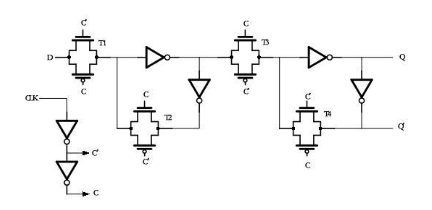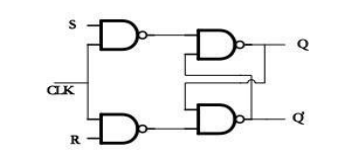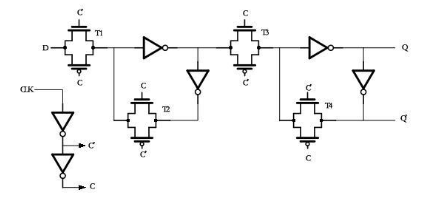What are the common types of triggers in digital circuits?
There are three types of flip-flops commonly used in digital sequential circuits: level flip-flops, pulse flip-flops, and edge flip-flops. Let me introduce you to these three triggers today.
Pulse trigger

As shown in the figure above, the pulse trigger consists of two identical level-triggered SR flip-flops, where the left SR flip-flop becomes the master flip-flop and the right-hand side is called the slave flip-flop. This circuit is also called Master-Slave SR Flip-Flop. The trigger mode of the pulse trigger is divided into two steps: the first step is that when CLK=1, the main trigger receives the signal of the input terminal, and is set to the corresponding state, and the slave trigger does not move. The second step is when the falling edge of CLK comes, the flip-flop is flipped according to the state of the main flip-flop. Therefore, the output state change of Q and Q' occurs at the falling edge of CLK.
Level trigger

As shown in the above figure, the logic structure diagram and the graphic symbol diagram of the level trigger can accept the input signal only when CLK is high level, and set the trigger output to the corresponding output according to the input signal. It consists of an SR flip-flop and two NAND gates, also known as synchronous SR flip-flops.
Edge trigger

As shown in the above figure, the edge trigger circuit structure mainly used in COMOS integrated circuits is actually a level-triggered D flip-flop composed of two CMOS transmission gates.
When CLK=0, TG1 turns on TG2 and TG3 turns off TG4.
When CLK=1 is, TG1 turns off TG2 and TG3 turns on TG4.
The secondary state of the edge flip-flop depends only on the rising edge of the clock signal or the logic state of the input when the falling edge arrives, and the change of the input signal before or after this has no effect on the output state of the flip-flop.
According to the different characteristics of logic functions, clock-controlled flip-flops can usually be classified into SR flip-flops, JK flip-flops, T flip-flops and D flip-flops. Trigger is an indispensable unit of sequential logic in digital design, which makes the circuit have a memory function. The combination of sequential logic circuits and combinatorial logic circuits makes digital circuits infinitely possible!
If you want to know more, our website has product specifications for triggers, you can go to ALLICDATA ELECTRONICS LIMITED to get more information

